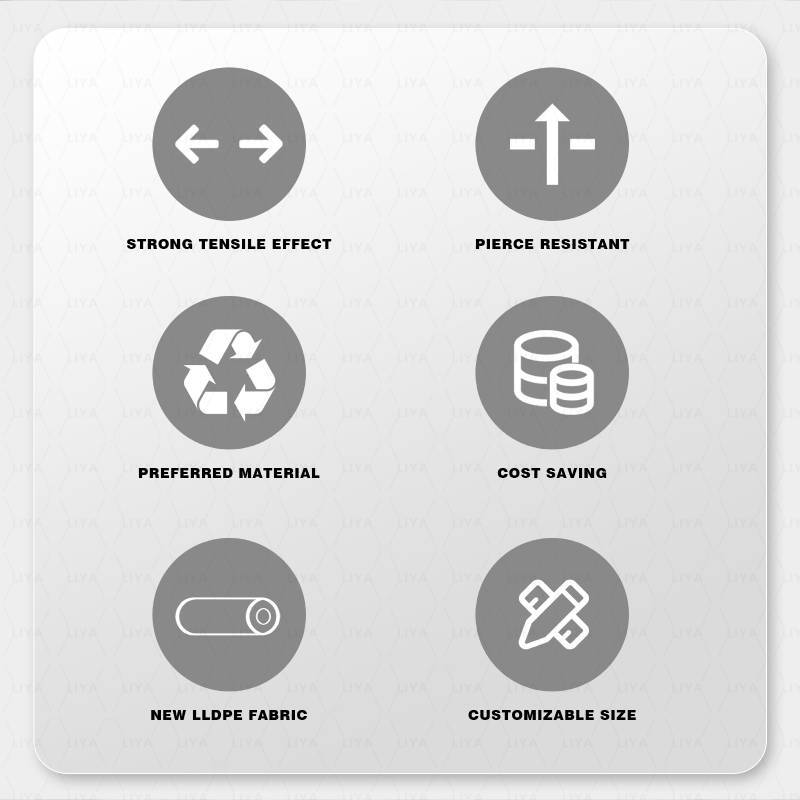cellophane biodegradable bags
The Rise of Cellophane Biodegradable Bags A Sustainable Choice for the Future
In recent years, the world's growing concern over plastic pollution and environmental degradation has prompted a shift towards eco-friendly alternatives. Among these innovations, cellophane biodegradable bags have emerged as a promising solution, offering a sustainable option for consumers and businesses alike. This article explores the advantages of cellophane bags, their biodegradability, and their potential role in combating plastic pollution.
Cellophane, a biodegradable material derived from cellulose, is produced through the regeneration of plant fibers. Unlike traditional plastics, which can take hundreds of years to decompose, cellophane bags break down naturally in a matter of months under proper environmental conditions. This rapid biodegradability is attributed to the cellulose content, which is biologically accessible and readily consumed by microorganisms. As a result, cellophane bags offer a promising alternative for reducing the pile-up of non-biodegradable waste in landfills and the oceans.
One of the key benefits of cellophane biodegradable bags is their versatility. They can be used in various applications, ranging from packaging for food items to retail shopping bags. Cellophane bags not only serve a functional purpose but also provide a visual appeal with their glossy finish and clarity. Additionally, they can be printed on, allowing businesses to brand their products while minimizing their carbon footprint.
Another significant advantage of cellophane bags is their ability to maintain the freshness of products. Their moisture-resistant properties make them an excellent choice for packaging food items, as they help to prevent spoilage and extend shelf life. This quality not only provides benefits to consumers but also helps reduce food waste—a significant contributor to environmental issues. By choosing cellophane bags for food packaging, producers can ensure that their products stay fresh longer while supporting sustainable practices.
cellophane biodegradable bags

Moreover, cellophane's renewable origins contribute to a reduced environmental impact. As it is derived from natural resources such as wood, cotton, and hemp, the production of cellophane bags is more sustainable compared to conventional plastic bags made from petroleum-based materials. The cultivation of plants used for cellophane production can also provide economic opportunities for farmers and contribute to sustainable agriculture practices.
Despite these advantages, the adoption of cellophane biodegradable bags is not without challenges. For instance, while cellophane bags are biodegradable, they require specific conditions for effective decomposition. Without access to adequate moisture and microbial activity, the breakdown process may be hindered. This emphasizes the need for proper waste management systems that prioritize industrial composting to ensure cellophane products are disposed of appropriately.
Additionally, some consumers may not be aware of the differences between biodegradable materials. The term biodegradable can sometimes mislead individuals into assuming that all materials labeled as such will decompose under any conditions. Therefore, public education is crucial to raise awareness about the specific characteristics and disposal requirements of cellophane bags. Improved consumer knowledge can facilitate better decision-making, ultimately leading to increased acceptance and usage.
As we strive to mitigate the impact of plastic pollution, cellophane biodegradable bags present a viable alternative for sustainable packaging solutions. Their ability to decompose rapidly, coupled with their versatility and aesthetic appeal, makes them an attractive option for businesses aiming to align with eco-friendly practices. Furthermore, they hold the potential to foster a circular economy by ensuring that packaging materials do not persist in the environment for prolonged periods.
In conclusion, the emergence of cellophane biodegradable bags signifies a step towards a more sustainable future. By prioritizing the use of materials that align with environmental goals, consumers and businesses can contribute to a significant reduction in plastic waste. As awareness grows and innovations continue, cellophane bags may play an essential role in creating a cleaner, greener planet. The transition to biodegradable alternatives is not just a trend; it is a necessary and responsible choice for the well-being of our environment and future generations.
-
Have the freedom of customizing your custom mailers any way you want! Our dedicated packaging support will help deliver you the mailing experience you need to elevate your shipping experience to the next level! Start making a strong impression on your customers and stand out from your competitors! -
LIYA uses high quality raw materials which directly purchased from large enterprises domestic and overseas such as PetroChina, Sinopec, Sabic, Equate, ExxonMobil, Dow Chemical, Total, and Borouge, ensuring the price advantage and quality of the raw materials. -
LIYA uses high quality raw materials which directly purchased from large enterprises domestic and overseas such as PetroChina, Sinopec, Sabic, Equate, ExxonMobil, Dow Chemical, Total, and Borouge, ensuring the price advantage and quality of the raw materials.





